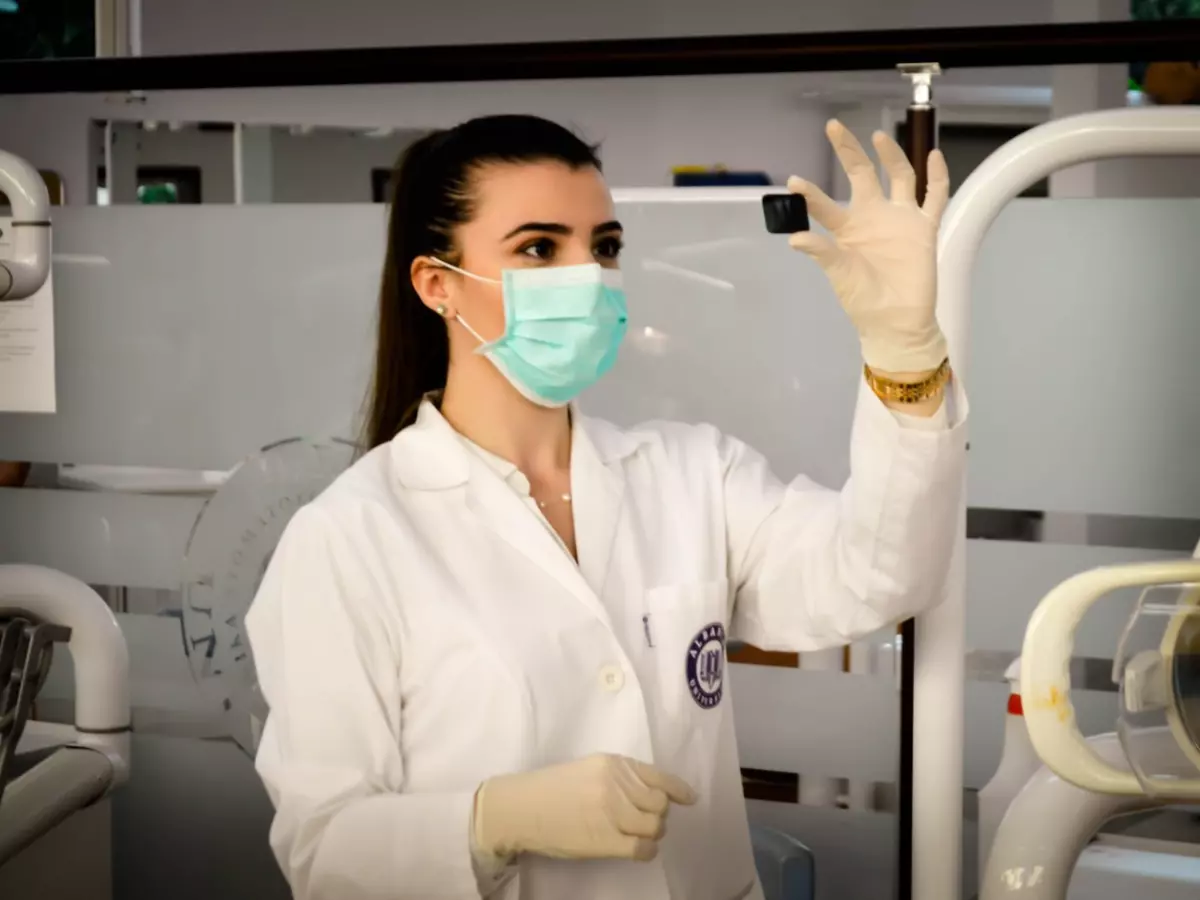Opinion: Innovation In Healthcare Can Help Rural India Meet Its Universal Health Coverage Goals
Jugunu, a man in his mid-thirties and a father of two girls sits anxiously on a ¡®Charpai,¡¯ outside his two-room house. He had spent three sleepless nights in the overcrowded compartment of a train to travel back home in a hurry. This panic was due to a health emergency being faced by his wife.

Jugunu, a man in his mid-thirties and a father of two girls sits anxiously on a ¡®Charpai,¡¯ outside his two-room house. He had spent three sleepless nights in the overcrowded compartment of a train to travel back home in a hurry. This panic was due to a health emergency being faced by his wife. She had consulted the local quack for a persistent issue and then visited the nearest Health and Wellness Centre, where the Community Health Officer suspected cervical cancer, and advised her to seek care at a higher facility.
As Jugunu waits anxiously for some news, an ASHA worker counsels his wife in a home where four goats purchased with the support of a Self-Help Group share the already cramped space. Jugnu¡¯s elder daughter is busy feeding a few hens, who stroll around with ease.
 Unsplash/Representational image
Unsplash/Representational image
This lived story is set in a remote village in Jharkhand, an ecologically challenged state where low rainfall has impacted agriculture, leading to migration. Jugnu too had to leave for a city where he now works in a factory as a daily laborer. His family's well-being however is always on his mind. His father also suffers from diabetes and needs regular medication.
His is not a unique case. India is currently experiencing a demographic and epidemiological transition characterized by a growing aging population and an increase in infectious and zoonotic diseases, along with threats of climate change. The question then is if we can bring equal livelihood opportunities to rural India but also with the help of a multidimensional approach, create community-first healthcare solutions.
To realize the promise of Universal Health Coverage and ensure access to quality health care without financial hardship, we need to reimagine and explore innovation in multiple areas. This includes augmenting our hard-achieved progress in maternal and child health, vaccination, and family planning services.
India is now the world¡¯s most populous country. With over half of its population below the age of 25, there is an unparalleled opportunity for widespread prosperity. The National Commission on Population estimates that even by 2050, half of India¡¯s population will continue to live outside its cities, underlining the importance of rural areas in the country¡¯s aspirations. Hence achieving Universal Quality Health Coverage through a multidisciplinary, whole-of-society approach is the need of the hour.
 Unsplash/Representational image
Unsplash/Representational image
Innovative solutions should be explored in all possible spaces, including social, economic, and technological (SET) realms, and serve many stakeholders. Governance and the service delivery architecture will also require a new lens.
Here is an overview of some ideas that can help us deliver healthcare solutions to last-mile citizens like Jugunu and his wife.
Co-creating innovative ideas and strategies by partnering with ¡®change vectors¡¯ selected from women self-help groups (SHGs) to advance health agendas within their own communities and support their peers in adopting scientific practices for improved health outcomes. It is important to develop local resilient communities involving community leaders, PRI representatives, and the local administration. In the last five years, TRI has identified and groomed 4000+ Change Vectors in Madhya Pradesh and Jharkhand to achieve this goal. External evaluations have confirmed gains in the adoption of IYCF practices, such as 3 ANC visits, and breastfeeding for 6 months, promoting food diversity, and encouraging the use of toilets. Access to health and nutrition has been increased.
Frontline First
Frontline workers (ASHA-ANM-AWW) play a critical role in reaching out and delivering essential services, particularly in hard-to-reach communities with few resources. Innovation is required to enhance their skills, equip them with supplies, kits, and tools, and create a community coordination system for increased awareness and improved delivery of essential health services.
Home-Based Care
COVID has made it evident that Home-Based Care or Hospital without boundaries is the future of healthcare service delivery models. With an increased aging population and advancements in technology, Home-Based Care will be adopted for not just newborns but will expand to other age groups. This unexplored area will require innovative solutions in all aspects, from regulatory and human resources to skill sets and care protocols. The State of Rural Healthcare by DIU and TRI indicated that 52% of respondents¡¯ family members with chronic illnesses availed services for doorstep delivery of diagnostic services. Hopefully in the near future, apart from diagnostics, doorstep service delivery will be explored in other products and services as well.
Integrating technology with health service delivery for Women¡¯s Dignity
Rural women are often reluctant to visit higher facilities for diagnosis and treatment, and there is also subjective bias observed in screening results due to the varying skill levels of healthcare providers across the system. One of our projects tackles this through the use of door-to-door AI screening machines, which combine the privacy of homes with the comfort of not having to travel. In six months, we were able to screen approximately 120,000 women aged 30 years and above for breast and cervical cancer. Through this effort, we identified 360 suspected cases of cervical cancer and 20 suspected cases of breast cancer. Given the number of breast cancer suspects, which is much lower than the actual prevalence rate of breast cancer, the introduction of AI tools and other digital solutions has greatly benefited healthcare in recent years. However, without steady internet connectivity and electricity, optimal utilization of these tools remains a challenge.
 Unsplash/Representational image
Unsplash/Representational image
Engaging the Private Sector in Rural India
In the Indian healthcare ecosystem, the private sector plays a critical role. In rural India, large private sector organizations are absent, and small to medium-sized hospitals, nursing homes, and clinics, while limited in number, play a crucial role. In the absence of any other option, people avail services in these facilities. Assisting small hospitals and nursing homes in quality improvement and exploring financing options will make services more affordable for people. The benefits of government schemes are also limited or nearly absent in these health facilities. We need innovative strategies to create an ecosystem that includes new-generation healthcare solutions. Testing and deploying new solutions in all segments, including diagnostics, remote ICUs, and drug delivery can not only serve urban populations but also help save lives in underserved regions. Similarly, options for innovative financial products and services should be explored to reduce high out-of-pocket expenses and protect people from financial hardship. While special initiatives to improve the coverage of insurance schemes like Ayushman Bharat are required, it should be remembered that the high concentration of specialized care in metro cities and urban areas excludes the rural poor from accessing services. Even if the cost of treatment can be covered under health insurance schemes, the cost of travel and other associated expenses like food and accommodation in cities may be unaffordable for the poor. Supporting these expenses would be necessary to bring a smile to the faces of people in need.
Exploring Domestic Health Tourism
In rural India, temporary migration within or outside the state to avail better healthcare services has been a normal phenomenon for decades, mainly due to structural deficits in healthcare facilities, especially in cases of serious or critical illness. The findings of the study conducted by DIU and TRI indicate that a large proportion of the participants opted to relocate from their current area to receive improved medical care for severe illnesses and surgical procedures. According to a survey, nearly 58% of the respondents had said that it is a general trend for people in their neighborhood to migrate to seek better health facilities for the treatment of critical illness. Over the past decade, India has gained a reputation for providing high-quality medical services at low costs to medical tourists traveling from across the globe. The potential for the ¡®Health & Wellness Hub¡¯ developed through centuries of wisdom of this ancient civilization needs to be fully tapped. While International Medical Tourism has gained momentum, ¡®Domestic Medical Tourism¡¯ has been overlooked and must be nurtured.
One Health and Climate Change
The impact of climate change and environmental degradation and its effect on health is a growing concern for people living in rural India. The increase in Emerging Infectious Diseases (EIDs) with pandemic potential is a major threat to health security. As 68 percent of the workforce relies on farming and remains in close contact with domestic animals and poultry, it frequently risks exposure to sick or infected animals. This also increases the possibility of disease outbreak and there has been a high incidence of endemic zoonotic diseases, including Rabies, Brucellosis, Toxoplasmosis, Cysticercosis, Echinococcosis, Japanese Encephalitis (JE), Leptospirosis, Scrub Typhus, Zoonotic Tuberculosis, etc. Innovations in processes and systems adopting a ¡®One Health¡¯ approach can help militate such outbreaks.
Digital Health
The eSanjeevani program was launched in November 2019 with the aim to deliver healthcare services in rural areas and remote communities. During COVID, eSanjeevani showed up as a blessing, and since then, its acceptance and reach have increased. The potential of Digital health in the public health arena needs innovation and expansion from consultation to digital healthcare as well as diagnostics.¡¯
 Unsplash/Representational image
Unsplash/Representational image
Reducing the Cost of Drugs
In India, most patients seeking treatment for acute or chronic diseases have been facing a silent crisis when it comes to accessing essential drugs. India has some of the highest out-of-pocket expenses (OOPE) when it comes to healthcare. Drugs constitute over 67% of out-of-pocket expenses on healthcare (NSSO 68th round). If quality essential drugs are provided free of cost to all patients, at least while visiting public health facilities, it would bring significant savings to the patients. Hence, the provision of free drugs is one of the most important interventions towards mitigating the burden of healthcare costs. Sustainable Development Goals pertaining to universal health coverage can be attained via safe, effective, and affordable essential generic medicines.
In rural India, a large number of people still live with deprivations that directly affect their health conditions, such as poverty, undernutrition, lack of access to safe water, inadequate living space, and environmental exposures. They face inequalities due to socioeconomic status, gender identity, place of birth, and geographical barriers to accessing essential health services. Achieving Universal Health Coverage will require a cohesive approach, bringing ¡®Samaj-Sarkar-Bazar¡¯ together, to combine innovation with ¡®Thoughtful Tarakki,¡¯ where people are at the centre of progress.
About the author: Shyamal Santra is the Associate Director for Public Health and Nutrition at Transform Rural India. All views/opinions expressed in the article are of the author.
Attirbution: Shyamal Santra, Associate Director for Public Health & Nutrition at Transform Rural India








